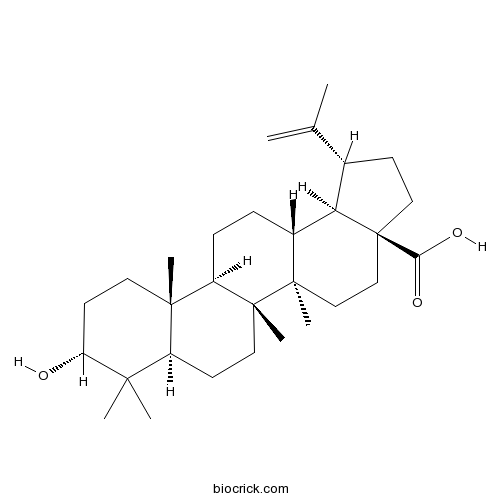Hedyotis hedyotidea
Hedyotis hedyotidea
1. The products in our compound library are selected from thousands of unique natural products; 2. It has the characteristics of diverse structure, diverse sources and wide coverage of activities; 3. Provide information on the activity of products from major journals, patents and research reports around the world, providing theoretical direction and research basis for further research and screening; 4. Free combination according to the type, source, target and disease of natural product; 5. The compound powder is placed in a covered tube and then discharged into a 10 x 10 cryostat; 6. Transport in ice pack or dry ice pack. Please store it at -20 °C as soon as possible after receiving the product, and use it as soon as possible after opening.
Natural products/compounds from Hedyotis hedyotidea
- Cat.No. Product Name CAS Number COA
-
BCN8531
3-Epibetulinic acid38736-77-5
Instructions

Betulin from Hedyotis hedyotidea ameliorates concanavalin A-induced and T cell-mediated autoimmune hepatitis in mice.[Pubmed: 27796295]
None
[Chemical constituents from stems of Hedyotis hedyotidea and their immunosuppressive activity].[Pubmed: 26591525]
Hedyotis hedyotidea has been traditionally used for the treatment of arthritis, cold, cough, gastro-enteritis, headstroke, etc. But few studies have screened the active compounds from extracts of H. hedyotidea. In this study, the structure of the chemical constituents from stems of H. hedyotidea were determined and the immunosuppressive activity of the compounds was evaluated. The compounds were separated and purified with silica gel, gel column chromatographies and preparative HPLC, and their structures were identified by spectral methods such as MS and NMR. Eleven compounds were obtained and identified as(6S,9S) -vomifoliol (1), betulonic acid (2), betulinic acid (3), betulin(4), 3-epi-betulinic acid (5), ursolic acid (6), β-sitosterol (7), stigmast-4-en-3-one (8), 7β-hydroxysitosterol (9), (3β,7β) -7-methoxystigmast-5-en-3-ol (10) and morindacin (11). This is the first report of compounds 1, 2, 4, 8, 9, 10 and 11 from H. hedyotidea. Compounds 1, 2 and 8-11 were firstly isolated from the genus Hedyotis, and compounds 9 and 10 were isolated from the family Rubiaceae for the first time. The immunosuppressive activity of these compounds was tested using the lymphocyte transsormationtest. Compounds 4, 6 and 9 showed significant immunosuppressive activity.


